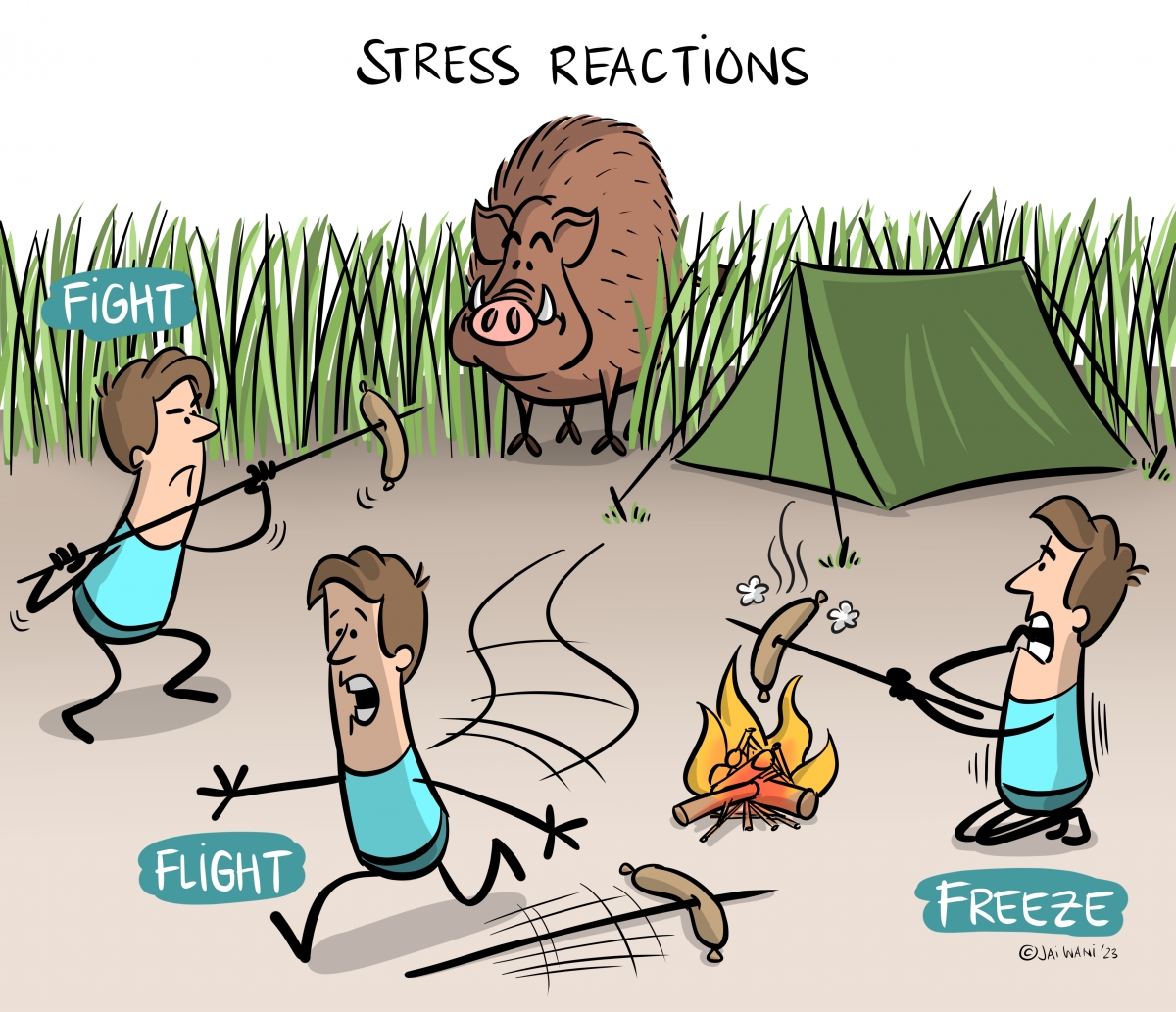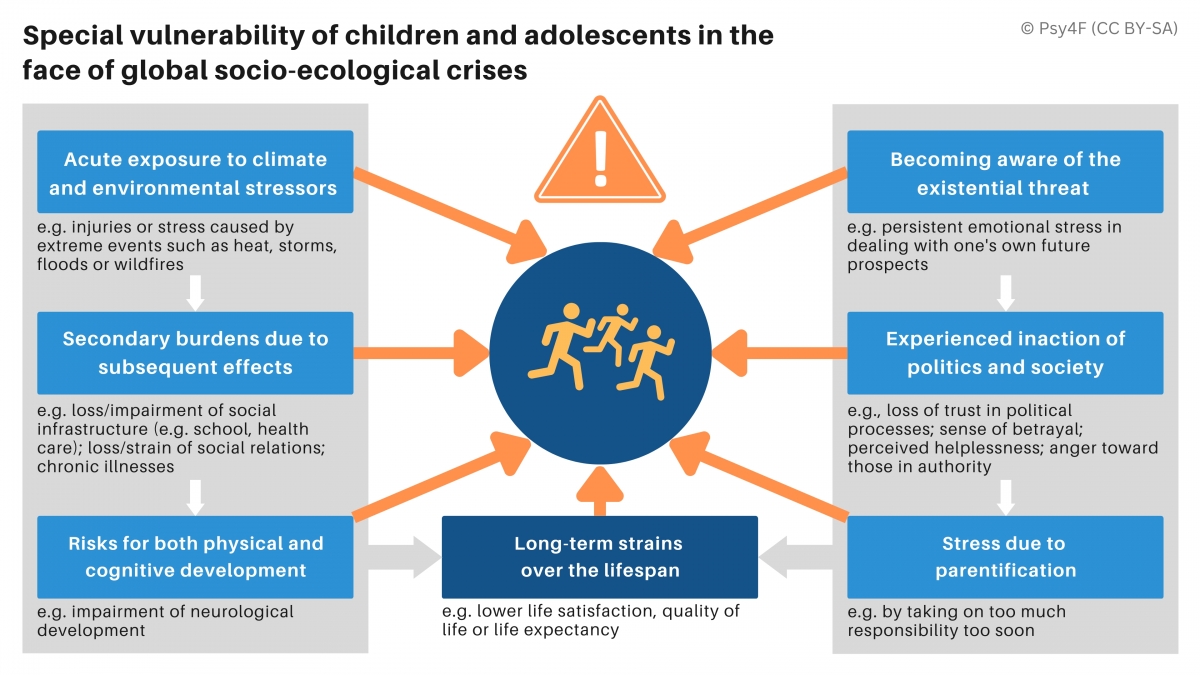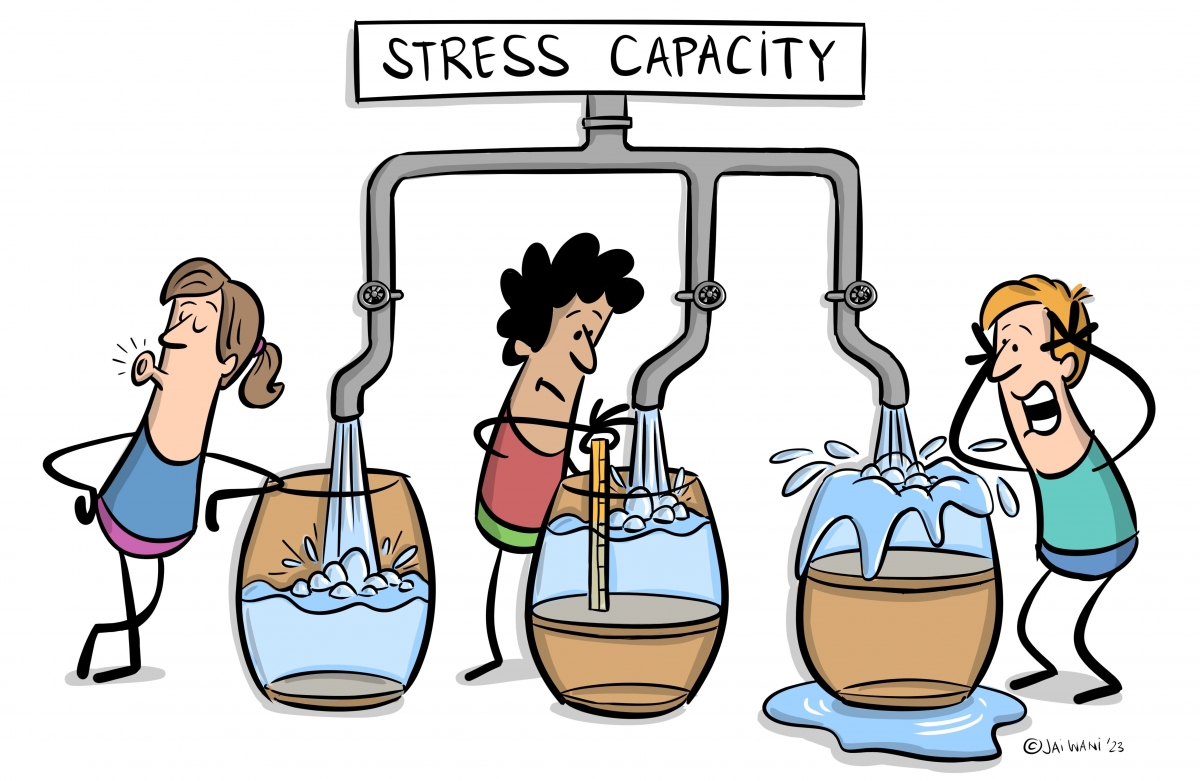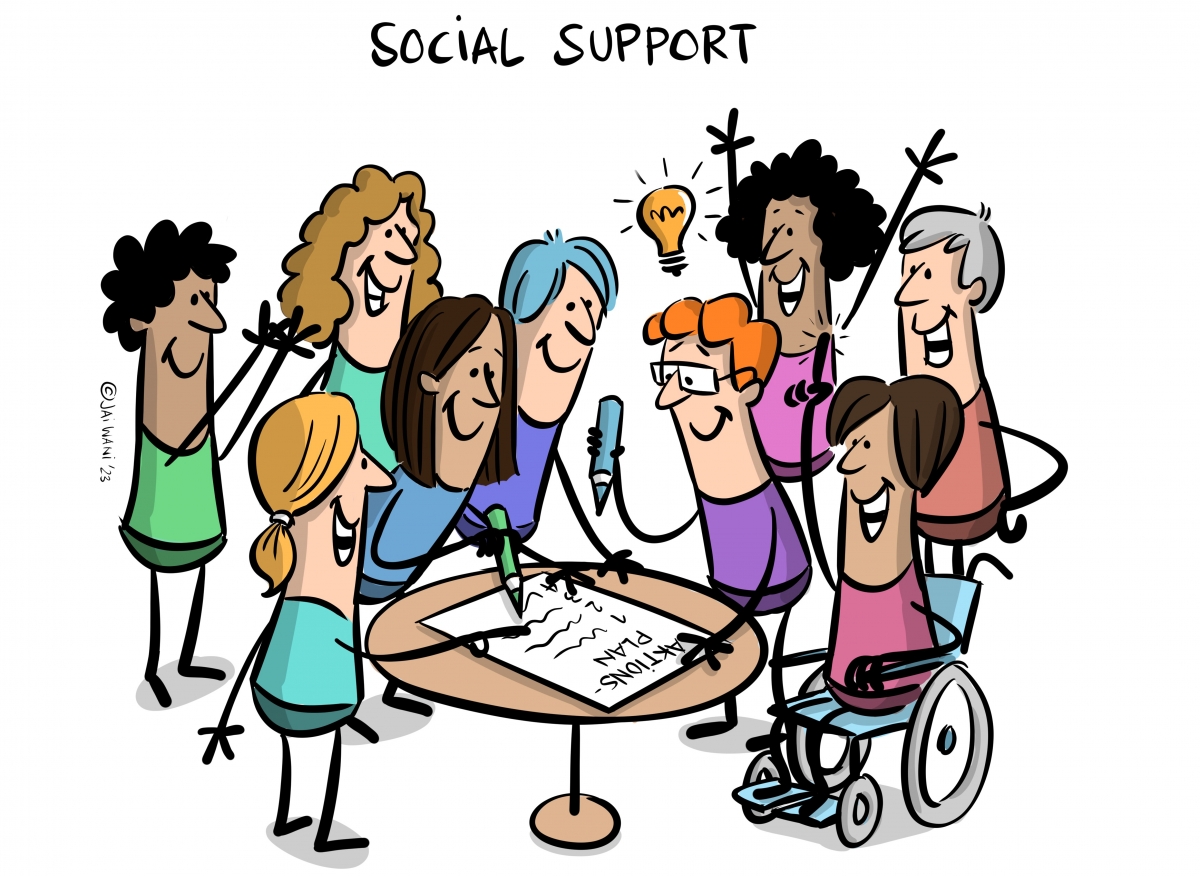Climate stress in everyday life: How can we support children?
The climate crisis leads to significant changes in nature and ultimately in our society challenging all of us. Children and adolescents are particularly vulnerable in their mental processing, as well as physically, due to their socially dependent position. How can we support them in dealing with this major challenge in their lives? We present current scientific findings related to the lives of young people. How can we support children in coping with climate stress? A team of psychologists explains.
Note: This article was already reviewed and is published in the German version of In-Mind.
Do you remember the first images from catastrophic floods in Europe in 2021 or 2023? Alternatively, you may recall the burning forests in the Mediterranean or Canada, also in 2023. If these impressions vividly come to mind, they probably do not leave you indifferent but evoke emotional reactions.
Global warming has arrived in all parts of the world as a climate crisis – with heat waves, droughts, floods, and much more. These experiences are part of current reports on severe changes in nature as natural disasters and dying ecosystems, or the increase in social conflicts and forced migration. Stronger societal disruptions are imminent if politics, economy, and society do not counteract immediately. To meet the now existentially urgent need, terms like “climate emergency” and “climate catastrophe” are increasingly used. Above all, these changes elicit considerable stress.
What is Climate Stress?
When people face fundamental threats and burdens, a stress reaction is absolutely appropriate. For example, imagine you are spending the night in the wilderness and sitting in front of your tent. Suddenly, a full-grown wild boar stands in front of you. Do you just remain relaxed? Or does your entire body and mind tense up to prepare a protective reaction? Normally, the latter should happen. Fortunately, as humans, we are designed to assess acute threats very fast and then react as quickly and appropriately as possible. This stress reaction, the immediate physical and psychological response to a stressor, is an ancient mechanism that has historically ensured our survival.
The way humans deal with stress or stressful situations depends, among other things, on how we appraise our coping abilities [1]: If we see good chances of successfully fighting the threat, we actively defend ourselves. If, on the other hand, we do not feel capable of actively doing something against a threat, we tend to flee or freeze – depending on our individual capabilities and dispositions. This simplified fight-flight-freeze model (Image 1) is generally used to explain immediate stress reactions.
 Fig 1: Stress reactions according to fight-flight-freeze theory
Fig 1: Stress reactions according to fight-flight-freeze theory
How does this response transfer to “modern” and more long-lasting threats like the climate crisis? In fact, our stress reaction depends on how threatened we feel individually. The stronger and more immediate the threat seems to us, the greater the associated stress (Image 2).
Many people respond to the threat posed by the climate crisis primarily by constantly thinking about it. This is less striking than an acute stressor such as the boar that can better activate our internal alarm system [2]. When it comes to complex dangers such as the climate crisis, it is even more important how threatening we personally perceive the danger to be [3], for example, in its extent or temporal and spatial proximity to us.
Many people are becoming more and more aware of the threat, whether through actual disasters, media reports (e.g., floods in large parts of Europe in 2023), or the global climate movement. Emotional “climate stress” includes not only an immediate stress or fear reaction but also a variety of other feelings such as anger (“Our planet is dying and politics does nothing!”), frustration (“Why isn't anyone doing anything?”), shock (e.g., about natural disasters or catastrophic future forecasts), shame (“I've flown so often myself.” “I love eating meat.”), and sadness (“Whole forests I used to know have burned down.”; [4]. All these feelings are understandable and can occur simultaneously or alternate with each other.
|
Why do humans actually have feelings if they can make life difficult? In psychology, feelings are understood, among other things, as indicators of needs, i.e., they provide us with clues about which topics or experiences are important to us and what we value and consider important. Feelings also serve to communicate needs between people. For example, crying conveys a feeling of sadness and leads to comfort from another person [5]. Through the perception of feelings, we can also be motivated to act: We actively seek out situations in which we feel comfortable or avoid and change unpleasant conditions [5]. Unpleasant feelings towards the climate crisis, such as fears or anger, are fundamentally appropriate and make sense, signaling the perception of a real threat. For example, they can motivate us to act if we see ourselves in a position to do so and do not feel left alone. |
What differentiates children from adults?
The climate crisis affects us all: Global warming leads to extreme weather conditions and environmental changes that can have direct effects on health. Children and adolescents are a particularly vulnerable population group during their physically and mentally sensitive developmental phases. They are already at a higher health risk today (e.g. due to their lower resistance to heat stress), while at the same time, they will be exposed to the consequences for much longer due to their longer life expectancy [6].
Children and young people face the additional problem that they are even less able than adults to protect themselves from the effects of the climate crisis. To maintain their health and well-being they have to rely on the care and protection of their parents, teachers and other caregivers, as well as on far-sighted policy and government decisions. If those responsible do not provide sufficient protection, this can further affect the health and well-being of young people (Image 3).
 Fig 3: Schematic representation of the psychological consequences of the climate crisis for children and adolescents in the face of changing living conditions as a result of global warming (based on Peter et al., 2022).
Fig 3: Schematic representation of the psychological consequences of the climate crisis for children and adolescents in the face of changing living conditions as a result of global warming (based on Peter et al., 2022).
Finally, children and adolescents are still learning to reliably regulate stronger feelings. So, on the one hand, they have to cope with the fact that they are much more affected by the climate crisis, and on the other hand, they also have to learn to deal with the resulting strong feelings. All this can increase stress even more.
Support beyond family and friends can be found especially in societal institutions. However, personal stress meets a stressed societal system: all people are affected and already challenged by everyday stressors (e.g., conflicts at home or at work) and other societal crises (e.g., the COVID-19 pandemic, ongoing wars). For schools as support systems, it is often difficult to adequately support young people in coping with stress due to widespread staff shortages and the impact of the pandemic [7].
What Mental Strains May Arise?
Regardless of whether it concerns children, adolescents, or adults: Unpleasant or stressful feelings, such as fear, are first and foremost understandable and appropriate in the face of a real threat like the climate crisis. They can be accompanied by nonspecific symptoms of stress, such as irritability, fatigue, concentration, and sleep difficulties, which can also affect everyday life. Some young people experience "climate rage" or "climate anxiety", for example, and are therefore irritable and worry more often [8]. This is a normal reaction that can usually be handled effectively, especially with social support.
Other young people, however, can hardly sleep because they find the climate crisis very frightening, for example, if they are acutely affected by an extreme event like a disastrous flood or wildfire. If they can hardly get out of their anxious thoughts during the day, are tired all day long, and feel little joy, these are clear health warning signs.
If stress becomes so intense that it exceeds one's own resources and coping abilities, a mental illness can develop. You can imagine it like this (Image 4): Every person has a certain capacity for stress, which we call vulnerability. For some, the capacity for stress is higher because other things in life are very positive (e.g., financial security, good relationships in the family). For others, the capacity for stress is lower, i.e., the vulnerability is higher because there are already other burdens (e.g., family conflicts). Sooner or later, everyone's barrel can overflow if too much stress occurs. In such cases, suffering usually increases, and impairments in everyday life become more likely.
 Fig 4: Capacity for stress as an explanation for the development of psychological stress
Fig 4: Capacity for stress as an explanation for the development of psychological stress
In summary, it can be said that all people can be mentally stressed if the stress becomes too high. Climate stress is one of the newer stress factors to which we as a society have not yet found good answers.
How Can Children and Adolescents Cope with Climate Stress?
To cope with climate stress, humans need strategies (see Figure 5). Some coping strategies are more suitable than others. For children and adolescents, three strategies are primarily discussed [9]: An emotion-focused approach primarily attempts to end the unpleasant emotional reaction to the stressor, for example, through cognitive reframing like “It won’t be that bad” or “Nothing will happen to me”. While this may help to get rid of unpleasant feelings in the short term, the real threat posed by the consequences of global warming remains and may even increase. Therefore, emotion-focused coping is considered less suitable in the long term.
 Fig 5: Coping strategies (emotion focused, problem focused, meaning focused)
Fig 5: Coping strategies (emotion focused, problem focused, meaning focused)
In order to mitigate the climate crisis and for a functioning personal response, a problem-focused approach is actually required: Strategies are chosen that are specifically designed to solve the threatening problem, such as the involvement in effective climate protection (e.g., significant reduction of CO2 emissions). Where necessary (e.g., in cases of heat stress), adaptation strategies must also be pursued.
However, the problem is very extensive. Thus, the climate crisis cannot be tackled by a purely problem-focused approach for individuals, especially for children and adolescents. This is where meaning-focused coping comes into play, which takes this overwhelming situation into account [10], [11]: In this approach, it is important to recognize the extent of the threat and to focus on sensible and individually feasible options for action (e.g., developing a climate-neutral school). This should also be done with the confidence that others are also taking action: “If I engage myself and many others do the same, we can make a difference together”.
Associated with the factor of hope is the protective factor of social support, which is widely recognized in psychology [12]. In all kinds of problem situations, e.g. at school, at work or when coping with grief, it is crucial for us humans how much support we perceive in our environment. Social support from peers and adults can significantly help children and adolescents in problem-focused or meaning-focused coping (see Figure 6).
Meaning-focused coping seems most appropriate in major societal crises. The chances of being able to realize effective measures for environmental and crisis management while remaining mentally healthy seem to be greatest with this approach [10], [13].
A well-known example of combining problem- and meaning-focused coping with social support is the rise of the global climate movement. Through political engagement, the movement has changed social awareness and contributed to a more problem-focused approach by political and economic decision-makers compared to before [14].
How Can Adults Provide Better Support?
In order to cope with stress and, in particular, the chronic stress of the climate crisis, an effective support system is needed. In this regard, it is necessary to consider not only the stress of the individual but also the stress of the system that surrounds the child, i.e. how parents or teachers are coping with it. This is because the stress of the system affects the stress of the individual [15]. For example, extremely hot days in an overheated school building increase the irritability and bad mood of both students and teachers.
Adults, both in the parental role and in educational institutions, are responsible on two levels: First, they can provide direct support. This includes offering conversations, taking feelings seriously, and acting together. In the climate crisis, however, taking responsibility at a social and political level is crucial, as children and young people are often not heard and do not have the right to vote. In order to respond to the needs of children and young people in social and political debates, all decisions should be made with special consideration for this age group. This could also foster new trust that adults are keeping the future of young people in mind [16].
Furthermore, the direct political involvement of children and adolescents in decision-making processes presents a promising opportunity [17]. By listening to and taking seriously the concerns and ideas of young people, their sense of self-efficacy can be strengthened [18], i.e., the belief that they can successfully cope with difficult situations. This is a crucial factor for well-being and for dealing with special stressors [19].
Schools and day-care centres present optimal learning environments where young people come together in social groups every day and can learn on a small scale how society works on a large scale. They are the first places beyond family structures where we as humans experience democratic action and the importance of democratic structures – and can effectively apply them in a protected and well-supported educational environment. Examples include children's councils in kindergartens or open learning and development formats in schools. In this respect, the responsibility and support of us adults are particularly important.
Bibliography
[1] Harrison, L. A., Ahn, C., & Adolphs, R. (2015). Exploring the structure of human defensive responses from judgments of threat scenarios. PLoS One, 10(8), e0133682.
[2] Ernst, G., Franke, A., & Franzkowiak, P. (2022). Stress und Stressbewältigung. https://doi.org/10.17623/BZGA:Q4-I118-2.0
[3] Bradley, G. L., Babutsidze, Z., Chai, A., & Reser, J. P. (2020). The role of climate change risk perception, response efficacy, and psychological adaptation in pro-environmental behavior: A two nation study. Journal of Environmental Psychology, 68, 101410. https://doi.org/10.1016/j.jenvp.2020.101410
[4] Pihkala, P. (2022). Toward a Taxonomy of Climate Emotions. Frontiers in Climate, 3. https://www.frontiersin.org/articles/10.3389/fclim.2021.738154
[5] Baumeister, R. F., Vohs, K. D., Nathan DeWall, C., & Zhang, L. (2007). How emotion shapes behavior: Feedback, anticipation, and reflection, rather than direct causation. Personality and social psychology review, 11(2), 167-203. https://doi.org/10.1177/1088868307301033
[6] Thiery, W., Lange, S., Rogelj, J., Schleussner, C. F., Gudmundsson, L., Seneviratne, S. I., ... & Wada, Y. (2021). Intergenerational inequities in exposure to climate extremes. Science, 374(6564), 158-160.
[7] Asbrand, J., Peter, F., Calvano, C., & Dohm, L. (2024). Umgang mit gesellschaftlichen Krisen im Schulalltag. Hogrefe.
[8] Sciberras, E., & Fernando, J. W. (2022). Climate change‐related worry among Australian adolescents: an eight‐year longitudinal study. Child and adolescent mental health, 27(1), 22-29. https://doi.org/10.1111/camh.12521
[9] Ojala, M., & Bengtsson, H. (2019). Young People’s Coping Strategies Concerning Climate Change: Relations to Perceived Communication With Parents and Friends and Proenvironmental Behavior. Environment and Behavior, 51(8), 907–935. https://doi.org/10.1177/0013916518763894
[10] Ojala, M. (2013). Coping with Climate Change among Adolescents: Implications for Subjective Well-Being and Environmental Engagement. Sustainability, 5(5), Art. 5. https://doi.org/10.3390/su5052191
[11] Ojala, M. (2015). Hope in the Face of Climate Change: Associations With Environmental Engagement and Student Perceptions of Teachers’ Emotion Communication Style and Future Orientation. The Journal of Environmental Education, 46(3), 133–148. https://doi.org/10.1080/00958964.2015.1021662
[12] Ma, T., Moore, J., & Cleary, A. (2022). Climate change impacts on the mental health and wellbeing of young people: A scoping review of risk and protective factors. Social Science & Medicine, 114888.
[13] Capstick, S., Nash, N., Whitmarsh, L., Poortinga, W., Haggar, P., & Brügger, A. (2022). The connection between subjective wellbeing and pro-environmental behaviour: Individual and cross-national characteristics in a seven-country study. Environmental science & policy, 133, 63-73. https://doi.org/10.1016/j.envsci.2022.02.025
[14] Bleh, J. (2021). What do we want!? Identität, Moral und Wirksamkeit. Eine sozialpsychologische Perspektive auf die Erfolgsfaktoren der jungen Klimabewegung. In L. Dohm, F. Peter, & K. van Bronswijk (Hrsg.), Climate Action - Psychologie der Klimakrise. Handlungshemmnisse und Handlungsmöglichkeiten (S. 251-282). Psychosozial-Verlag. https://doi.org/10.30820/9783837978018-251
[15] Miles-Novelo, A., & Anderson, C. A. (2019). Climate change and psychology: Effects of rapid global warming on violence and aggression. Current Climate Change Reports, 5, 36-46. https://doi.org/10.1007/s40641-019-00121-2
[16] Hickman, C., Marks, E., Pihkala, P., Clayton, S., Lewandowski, R. E., Mayall, E. E., ... & van Susteren, L. (2021). Climate anxiety in children and young people and their beliefs about government responses to climate change: a global survey. The Lancet Planetary Health, 5(12), e863-e873.
[17] Weiss, J. (2020). What is youth political participation? Literature review on youth political participation and political attitudes. Frontiers in Political Science, 2, 1.
[18] Tzankova, I., Albanesi, C., Prati, G., & Cicognani, E. (2022). Development of civic and political engagement in schools: A structural equation model of democratic school characteristics' influence on different types of participation. European Journal of Developmental Psychology, 1-22. https://doi.org/10.1080/17405629.2022.2094362
[19] Vella, S. L. C., & Pai, N. B. (2019). A theoretical review of psychological resilience: Defining resilience and resilience research over the decades. Archives of Medicine and Health Sciences, 7(2), 233-239.
Pictures
Image 1: Property of the authors by Jai Wanigesinghe
Image 2: Property of the authors by Jai Wanigesinghe
Image 3: Peter, F., Dohm, L., & Krimmer, M. (2023). Psychische Konsequenzen der Klimakrise. Monatsschrift Kinderheilkunde, 171(2), 130-137. https://doi.org/10.1007/s00112-022-01670-x
Image 4: Property of the authors by Jai Wanigesinghe
Image 5a/b/c: Property of the authors by Jai Wanigesinghe
Image 6: Property of the authors by Jai Wanigesinghe





